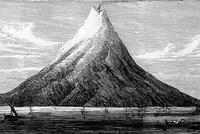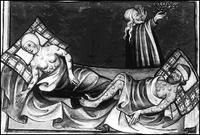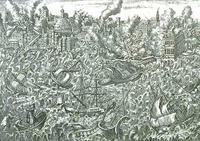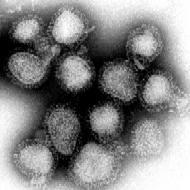
Daily Science News (ABC)
[Click on any headline for the full story].
EnviroSpin Mini Poll
Links (*suggest daily read)
- Press Complaints Commission
- Stephen Pollard's Blogspot
- *Norman Geras' Blogspot
- Oliver Kamm's Blogspot
- Food Standards Agency
- *Butterflies and Wheels
- A Parliament of Things
- The Scientific Alliance
- Sense About Science
- Contacting the BBC
- Muck and Mystery
- *The Daily Ablution
- The Royal Society
- *The Uneasy Chair
- Richard D. North
- *Crooked Timber
- *Greenie Watch
- *Melanie Phillips
- Number Watch
- Black Triangle
- City Comforts
- George Junior
- Harry's Place
- Google News
- Catallarchy
- BaySense
- *Tim Blair
- Sp!ked
- SIAW
Translate EnviroSpin
[Fr, Germ, Port, Sp]
Archives
- 09/28/2003 - 10/05/2003
- 10/05/2003 - 10/12/2003
- 10/12/2003 - 10/19/2003
- 10/19/2003 - 10/26/2003
- 10/26/2003 - 11/02/2003
- 11/02/2003 - 11/09/2003
- 11/09/2003 - 11/16/2003
- 11/16/2003 - 11/23/2003
- 11/23/2003 - 11/30/2003
- 11/30/2003 - 12/07/2003
- 12/07/2003 - 12/14/2003
- 12/14/2003 - 12/21/2003
- 12/21/2003 - 12/28/2003
- 12/28/2003 - 01/04/2004
- 01/04/2004 - 01/11/2004
- 01/11/2004 - 01/18/2004
- 01/18/2004 - 01/25/2004
- 01/25/2004 - 02/01/2004
- 02/01/2004 - 02/08/2004
- 02/08/2004 - 02/15/2004
- 02/15/2004 - 02/22/2004
- 02/22/2004 - 02/29/2004
- 02/29/2004 - 03/07/2004
- 03/14/2004 - 03/21/2004
- 03/21/2004 - 03/28/2004
- 03/28/2004 - 04/04/2004
- 04/04/2004 - 04/11/2004
- 04/11/2004 - 04/18/2004
- 04/25/2004 - 05/02/2004
- 05/02/2004 - 05/09/2004
- 05/16/2004 - 05/23/2004
- 05/23/2004 - 05/30/2004
- 05/30/2004 - 06/06/2004
- 06/06/2004 - 06/13/2004
- 06/13/2004 - 06/20/2004
- 06/20/2004 - 06/27/2004
- 06/27/2004 - 07/04/2004
- 07/04/2004 - 07/11/2004
- 07/11/2004 - 07/18/2004
- 07/18/2004 - 07/25/2004
- 07/25/2004 - 08/01/2004
- 08/01/2004 - 08/08/2004
- 08/08/2004 - 08/15/2004
- 08/15/2004 - 08/22/2004
- 08/22/2004 - 08/29/2004
- 08/29/2004 - 09/05/2004
- 09/05/2004 - 09/12/2004
- 09/12/2004 - 09/19/2004
- 09/19/2004 - 09/26/2004
- 10/31/2004 - 11/07/2004
- 11/07/2004 - 11/14/2004
- 11/14/2004 - 11/21/2004
- 12/05/2004 - 12/12/2004
- 12/12/2004 - 12/19/2004
- 12/19/2004 - 12/26/2004
- 12/26/2004 - 01/02/2005
- 01/02/2005 - 01/09/2005
- 01/09/2005 - 01/16/2005
- 01/16/2005 - 01/23/2005
- 01/23/2005 - 01/30/2005
- 01/30/2005 - 02/06/2005
- 02/06/2005 - 02/13/2005
- 02/13/2005 - 02/20/2005
- 02/20/2005 - 02/27/2005
- 02/27/2005 - 03/06/2005
- 03/06/2005 - 03/13/2005
- 03/13/2005 - 03/20/2005
- 04/10/2005 - 04/17/2005
- 04/17/2005 - 04/24/2005
- 05/01/2005 - 05/08/2005
- 05/08/2005 - 05/15/2005
- 05/15/2005 - 05/22/2005
- 05/22/2005 - 05/29/2005
- 05/29/2005 - 06/05/2005
- 06/05/2005 - 06/12/2005
- 06/12/2005 - 06/19/2005
- 06/19/2005 - 06/26/2005
- 06/26/2005 - 07/03/2005
- 07/03/2005 - 07/10/2005
- 07/10/2005 - 07/17/2005
- 08/07/2005 - 08/14/2005
- 08/28/2005 - 09/04/2005
- 09/04/2005 - 09/11/2005
- 09/11/2005 - 09/18/2005
- 09/18/2005 - 09/25/2005
- 09/25/2005 - 10/02/2005
- 10/02/2005 - 10/09/2005
- 10/09/2005 - 10/16/2005
- 10/16/2005 - 10/23/2005
- 10/23/2005 - 10/30/2005
- 10/30/2005 - 11/06/2005
- 11/06/2005 - 11/13/2005
- 11/13/2005 - 11/20/2005
- 11/20/2005 - 11/27/2005
- 11/27/2005 - 12/04/2005
- 12/04/2005 - 12/11/2005
- 12/11/2005 - 12/18/2005
- 12/18/2005 - 12/25/2005
- 12/25/2005 - 01/01/2006
- 01/01/2006 - 01/08/2006
- 01/08/2006 - 01/15/2006
- 01/15/2006 - 01/22/2006
- 02/19/2006 - 02/26/2006
- 02/26/2006 - 03/05/2006
- 03/05/2006 - 03/12/2006
- 03/12/2006 - 03/19/2006
- 03/19/2006 - 03/26/2006
- 03/26/2006 - 04/02/2006
- 04/02/2006 - 04/09/2006
- 04/09/2006 - 04/16/2006
- 04/16/2006 - 04/23/2006
- 04/23/2006 - 04/30/2006
- 04/30/2006 - 05/07/2006
- 05/07/2006 - 05/14/2006
- 05/14/2006 - 05/21/2006
- 05/21/2006 - 05/28/2006
- 05/28/2006 - 06/04/2006
- 06/04/2006 - 06/11/2006
- 06/18/2006 - 06/25/2006
- 06/25/2006 - 07/02/2006
- 07/02/2006 - 07/09/2006
- 07/09/2006 - 07/16/2006
- 07/16/2006 - 07/23/2006
- 10/01/2006 - 10/08/2006
- 11/05/2006 - 11/12/2006
- 10/07/2007 - 10/14/2007
Safer Browsing
A Weblog monitoring coverage of environmental issues and science in the UK media. By Professor Emeritus Philip Stott. The aim is to assess whether a subject is being fairly covered by press, radio, and television. Above all, the Weblog will focus on science, but not just on poor science. It will also bring to public notice good science that is being ignored because it may be politically inconvenient.
Sunday, October 16, 2005
The top human killers.....
 With natural, and semi-natural, disasters having become such a staple of our rolling 24-hour News, I thought it might be helpful to provide, from historical evidence, a 'Premier League Table of Deaths from Natural and Semi-natural Causes' (other than old age) so that current events may be seen in historical context and the real level of risk evaluated.
With natural, and semi-natural, disasters having become such a staple of our rolling 24-hour News, I thought it might be helpful to provide, from historical evidence, a 'Premier League Table of Deaths from Natural and Semi-natural Causes' (other than old age) so that current events may be seen in historical context and the real level of risk evaluated.
[Upper Right: early C19th print of Krakatoa: licensed under the GNU Free Documentation License. This is material from the Wikipedia article on 'Krakatoa'.]
A Premier League of Deaths from Natural and Semi-natural Causes
(in order of expected number of fatalities)
[NH1 Supervolcano
No historic record. Prehistoric record only: Lake Toba, Indonesia, c.75,000 years ago. Studies of mitochondrial DNA indicate a possible reduction, at the time, of the world human population (Homo erectus, H. neanderthalensis, and H. sapiens) to a few 1,000 individuals. Potentially the most serious threat, but on a long and a largely unpredictable timescale. One of the most powerful eruptions was of the Yellowstone Caldera, USA, about 2,000,000 years ago, an event which almost certainly caused an extended period of volcanic winter. Even larger cataclysmic eruptions have occurred during the Earth's 4.7 billion years.]
H1 Pandemics and Epidemics (often aided by starvation and war)
Although less consistent overall than H2 Drought and Starvation, pandemics have recorded the highest known death tolls.
On average: epidemics fewer than 100,000 (e.g. typhus, The Balkans, 1542 [30,000]). The pandemics, however, are the greatest worry:
1348-50 Black Death, Europe - one-third to one-half of the total population;
1918-19 'Spanish' Flu (strain H1N1)1, worldwide - more than 25 million (possibly as high as 50 million);
1353-54 Black Death, China - at least 25 million;
1518-20 Smallpox, Mexico - up to 15 million (compounded by war);
1917-22 Typhus fever, Russia - up to 3 million;
1957-58 'Asian' Flu (strains H2N2 and H3N2), worldwide - more than 1 million.
[We should also note that, at the end of 2004, there were between 36 and 44 million people living with the retrovirus HIV, the human immunodeficiency virus, of whom 25 million were in sub-Saharan Africa. The global estimates for new HIV infection in 2004 were 4.3-6.4 million. AIDS is thought to have originated in sub-Saharan Africa during the twentieth century but it is now a true global epidemic. The World Health Organization (WHO) estimate that, worldwide, between 2.8 and 3.5 million people with AIDS died in 2004.]
[Upper Right: the Black Death: licensed under the GNU Free Documentation License. This is material from the Wikipedia article on the 'Black Death'. Image public domain.]
H2 Drought and Starvation (often aided and abetted by human failures and compounded by disease)
On average: deaths fewer than 50,000, but there is a regular historic record of deaths in the millions, high figures more consistent than even those from H1 Pandemics and Epidemics. The most recent include:
1936 Sichuan Province, Hebei, China - 5 million;
1921-22 Soviet Union - up to 5 million;
1900 India - up to 3.5 million (compounded by disease);
1928-30 N.W. China - over 3 million;
1941 Sichuan Province, China, - 2.5 million (compounded by war with Japan);
1965-67 India - 1.5 million.
H3 Floods and Tropical Cyclones
On average fewer than 5,000 (e.g. the Johnstown Flood, Pennsylvania, 1889 [2,200]; North Sea Flood, Holland and UK, 1953 [2,000]). Many causes, including hurricanes and tidal surges, but also often compounded by the failure of dam structures and disease. The worst modern death tolls are all from Asia:
1931 The Huang He Flood, China - up to 4 million;
1970 The Bhola Cyclone, East Pakistan (now Bangladesh) - more than 500,000 + 100,000 missing;
1975 Henan Province, China - more than 200,000 (compounded by dam bursts).
H4 Earthquakes and Tsunami
On average: fewer than 1,000. The top include:
1556 The Shaanxi Earthquake, China - c.830,000;
2004 The Indian Ocean Earthquake and Tsunami - more than 350,000;
1976 The Tangshan Earthquake, China - 242,149;
1923 The Great Kanto Earthquake (Yokohama, Tokyo and Kanto Plain) - 140,000 (compounded by fires);
1755 Lisbon, Portugal - around 90,000 (compounded by fires).
[Upper Right: the Lisbon Earthquake and Tsunami, 1755: licensed under the GNU Free Documentation License. This is material from the Wikipedia article on the 'Lisbon Earthquake'. Image public domain.]
H5 Volcanic Eruptions (non NH1 Supervolcano)
On average: fewer than 500, and normally always below 100,000. [For general interest and comparison, Vesuvius, in 79AD, killed c.3,360. This was a very high %, however, of the population at the time.] The top include:
1815 Tambora, Indonesia - 92,000;
1883 Krakatoa, Indonesia - 36,417;
1902 Mount Pelée, Martinique - 29,025;
1985 Nevado del Ruiz, Colombia - 25,000.
H6 Impacts from Space
On average: fewer than 1. Other than speculations about the extinction of the dinosaurs etc., to date there has been only one recorded fatality from a meteorite, a dog, in Egypt, in 1911. The only confirmed human hit directly was Ann Hodges, Sylacauga, Alabama, in 1954 (a 4kg stone). In addition, we should record the mysterious impact event, the Tunguska Event, in Evenkia, Siberia, in 1908, which felled 60 million trees. The standard interpretation is that this was a meteor airburst.
Considering this historic record, six main conclusions may be drawn:
(a) Asia is the most naturally-dangerous continent by far;
(b) Pandemic/epidemic disease and drought, compounded by starvation, have the greatest historic potential to kill in the millions. Hence the genuine concern over avian flu;
(c) Since 1900, there have been at least 10 natural and semi-natural events with a death toll in the millions. Thus, despite their dreadfulness, neither the Indian Ocean Earthquake and Tsunami of 2004 (although this is near the top of its class) nor the current tragic earthquake in Pakistan/Kashmir enter the biggest league of natural disasters, while Hurricane Katrina is well below average, even for its own category;
(d) We inhabit an ever-restless Earth, a fact which will never change, and the only way to alleviate the death tolls is by constant vigilance and by living and building with these threats in mind. Vesuvius, for example, is expected to erupt on a Plinian scale some time during the next 30 years. Why then is the Italian government allowing building all around the mountain, between Naples and Sorrento? At current population densities, the expected death toll is likely to be at the top end of the volcanic-eruption scale;
(e) The greatest human tragedy is most likely to come from disease, and especially from viruses;
(f) Some of the comment and reporting on disasters in certain of our so-called serious newspapers is more dire than in the direst tabloid or red top (e.g. today see The Independent on Sunday [now there's a surprise] and The Sunday Times Colour Supplement. Indeed, has The Indy morphed into the very worst newspaper in Britain?).
[Upper Right: negatively-stained flu virions of the Hong Kong Flu pandemic: licensed under the GNU Free Documentation License. This is material from the Wikipedia article on 'Influenza'. Image public domain.]
____________________________
(1) The name H1N1 is derived from the hemagglutinin (H) and the neuraminidase (N) protein spikes in the virus core. H1N1 is an influenza type of the A genus (avian influenza) of the virus family Orthomyxoviridae. The current threat is from H5N1. Influenza A viruses have 16 H subtypes and 9 N subtypes. Only viruses of the H5 and H7 subtypes are known to cause the highly pathogenic form of the disease. However, not all viruses of the H5 and H7 subtypes are highly pathogenic and not all will cause severe disease in poultry. On present understanding, H5 and H7 viruses are introduced to poultry flocks in their low pathogenic form. When allowed to circulate in poultry populations, the viruses can mutate, usually within a few months, into the highly pathogenic form. This is why the presence of an H5 or H7 virus in poultry is always cause for concern, even when the initial signs of infection are mild. See: 'Avian influenza frequently asked questions' (WHO, October 2005).
Philip, context, context, context. History is never bunk. Breakfast.
 With natural, and semi-natural, disasters having become such a staple of our rolling 24-hour News, I thought it might be helpful to provide, from historical evidence, a 'Premier League Table of Deaths from Natural and Semi-natural Causes' (other than old age) so that current events may be seen in historical context and the real level of risk evaluated.
With natural, and semi-natural, disasters having become such a staple of our rolling 24-hour News, I thought it might be helpful to provide, from historical evidence, a 'Premier League Table of Deaths from Natural and Semi-natural Causes' (other than old age) so that current events may be seen in historical context and the real level of risk evaluated.[Upper Right: early C19th print of Krakatoa: licensed under the GNU Free Documentation License. This is material from the Wikipedia article on 'Krakatoa'.]
A Premier League of Deaths from Natural and Semi-natural Causes
(in order of expected number of fatalities)
[NH1 Supervolcano
No historic record. Prehistoric record only: Lake Toba, Indonesia, c.75,000 years ago. Studies of mitochondrial DNA indicate a possible reduction, at the time, of the world human population (Homo erectus, H. neanderthalensis, and H. sapiens) to a few 1,000 individuals. Potentially the most serious threat, but on a long and a largely unpredictable timescale. One of the most powerful eruptions was of the Yellowstone Caldera, USA, about 2,000,000 years ago, an event which almost certainly caused an extended period of volcanic winter. Even larger cataclysmic eruptions have occurred during the Earth's 4.7 billion years.]
H1 Pandemics and Epidemics (often aided by starvation and war)
Although less consistent overall than H2 Drought and Starvation, pandemics have recorded the highest known death tolls.
On average: epidemics fewer than 100,000 (e.g. typhus, The Balkans, 1542 [30,000]). The pandemics, however, are the greatest worry:
1348-50 Black Death, Europe - one-third to one-half of the total population;

1918-19 'Spanish' Flu (strain H1N1)1, worldwide - more than 25 million (possibly as high as 50 million);
1353-54 Black Death, China - at least 25 million;
1518-20 Smallpox, Mexico - up to 15 million (compounded by war);
1917-22 Typhus fever, Russia - up to 3 million;
1957-58 'Asian' Flu (strains H2N2 and H3N2), worldwide - more than 1 million.
[We should also note that, at the end of 2004, there were between 36 and 44 million people living with the retrovirus HIV, the human immunodeficiency virus, of whom 25 million were in sub-Saharan Africa. The global estimates for new HIV infection in 2004 were 4.3-6.4 million. AIDS is thought to have originated in sub-Saharan Africa during the twentieth century but it is now a true global epidemic. The World Health Organization (WHO) estimate that, worldwide, between 2.8 and 3.5 million people with AIDS died in 2004.]
[Upper Right: the Black Death: licensed under the GNU Free Documentation License. This is material from the Wikipedia article on the 'Black Death'. Image public domain.]
H2 Drought and Starvation (often aided and abetted by human failures and compounded by disease)
On average: deaths fewer than 50,000, but there is a regular historic record of deaths in the millions, high figures more consistent than even those from H1 Pandemics and Epidemics. The most recent include:
1936 Sichuan Province, Hebei, China - 5 million;
1921-22 Soviet Union - up to 5 million;
1900 India - up to 3.5 million (compounded by disease);
1928-30 N.W. China - over 3 million;
1941 Sichuan Province, China, - 2.5 million (compounded by war with Japan);
1965-67 India - 1.5 million.
H3 Floods and Tropical Cyclones
On average fewer than 5,000 (e.g. the Johnstown Flood, Pennsylvania, 1889 [2,200]; North Sea Flood, Holland and UK, 1953 [2,000]). Many causes, including hurricanes and tidal surges, but also often compounded by the failure of dam structures and disease. The worst modern death tolls are all from Asia:
1931 The Huang He Flood, China - up to 4 million;
1970 The Bhola Cyclone, East Pakistan (now Bangladesh) - more than 500,000 + 100,000 missing;
1975 Henan Province, China - more than 200,000 (compounded by dam bursts).
H4 Earthquakes and Tsunami
On average: fewer than 1,000. The top include:
1556 The Shaanxi Earthquake, China - c.830,000;

2004 The Indian Ocean Earthquake and Tsunami - more than 350,000;
1976 The Tangshan Earthquake, China - 242,149;
1923 The Great Kanto Earthquake (Yokohama, Tokyo and Kanto Plain) - 140,000 (compounded by fires);
1755 Lisbon, Portugal - around 90,000 (compounded by fires).
[Upper Right: the Lisbon Earthquake and Tsunami, 1755: licensed under the GNU Free Documentation License. This is material from the Wikipedia article on the 'Lisbon Earthquake'. Image public domain.]
H5 Volcanic Eruptions (non NH1 Supervolcano)
On average: fewer than 500, and normally always below 100,000. [For general interest and comparison, Vesuvius, in 79AD, killed c.3,360. This was a very high %, however, of the population at the time.] The top include:
1815 Tambora, Indonesia - 92,000;
1883 Krakatoa, Indonesia - 36,417;
1902 Mount Pelée, Martinique - 29,025;
1985 Nevado del Ruiz, Colombia - 25,000.
H6 Impacts from Space
On average: fewer than 1. Other than speculations about the extinction of the dinosaurs etc., to date there has been only one recorded fatality from a meteorite, a dog, in Egypt, in 1911. The only confirmed human hit directly was Ann Hodges, Sylacauga, Alabama, in 1954 (a 4kg stone). In addition, we should record the mysterious impact event, the Tunguska Event, in Evenkia, Siberia, in 1908, which felled 60 million trees. The standard interpretation is that this was a meteor airburst.
Considering this historic record, six main conclusions may be drawn:
(a) Asia is the most naturally-dangerous continent by far;

(b) Pandemic/epidemic disease and drought, compounded by starvation, have the greatest historic potential to kill in the millions. Hence the genuine concern over avian flu;
(c) Since 1900, there have been at least 10 natural and semi-natural events with a death toll in the millions. Thus, despite their dreadfulness, neither the Indian Ocean Earthquake and Tsunami of 2004 (although this is near the top of its class) nor the current tragic earthquake in Pakistan/Kashmir enter the biggest league of natural disasters, while Hurricane Katrina is well below average, even for its own category;
(d) We inhabit an ever-restless Earth, a fact which will never change, and the only way to alleviate the death tolls is by constant vigilance and by living and building with these threats in mind. Vesuvius, for example, is expected to erupt on a Plinian scale some time during the next 30 years. Why then is the Italian government allowing building all around the mountain, between Naples and Sorrento? At current population densities, the expected death toll is likely to be at the top end of the volcanic-eruption scale;
(e) The greatest human tragedy is most likely to come from disease, and especially from viruses;
(f) Some of the comment and reporting on disasters in certain of our so-called serious newspapers is more dire than in the direst tabloid or red top (e.g. today see The Independent on Sunday [now there's a surprise] and The Sunday Times Colour Supplement. Indeed, has The Indy morphed into the very worst newspaper in Britain?).
[Upper Right: negatively-stained flu virions of the Hong Kong Flu pandemic: licensed under the GNU Free Documentation License. This is material from the Wikipedia article on 'Influenza'. Image public domain.]
____________________________
(1) The name H1N1 is derived from the hemagglutinin (H) and the neuraminidase (N) protein spikes in the virus core. H1N1 is an influenza type of the A genus (avian influenza) of the virus family Orthomyxoviridae. The current threat is from H5N1. Influenza A viruses have 16 H subtypes and 9 N subtypes. Only viruses of the H5 and H7 subtypes are known to cause the highly pathogenic form of the disease. However, not all viruses of the H5 and H7 subtypes are highly pathogenic and not all will cause severe disease in poultry. On present understanding, H5 and H7 viruses are introduced to poultry flocks in their low pathogenic form. When allowed to circulate in poultry populations, the viruses can mutate, usually within a few months, into the highly pathogenic form. This is why the presence of an H5 or H7 virus in poultry is always cause for concern, even when the initial signs of infection are mild. See: 'Avian influenza frequently asked questions' (WHO, October 2005).
Philip, context, context, context. History is never bunk. Breakfast.
[New counter, June 19, 2006, with loss of some data]
